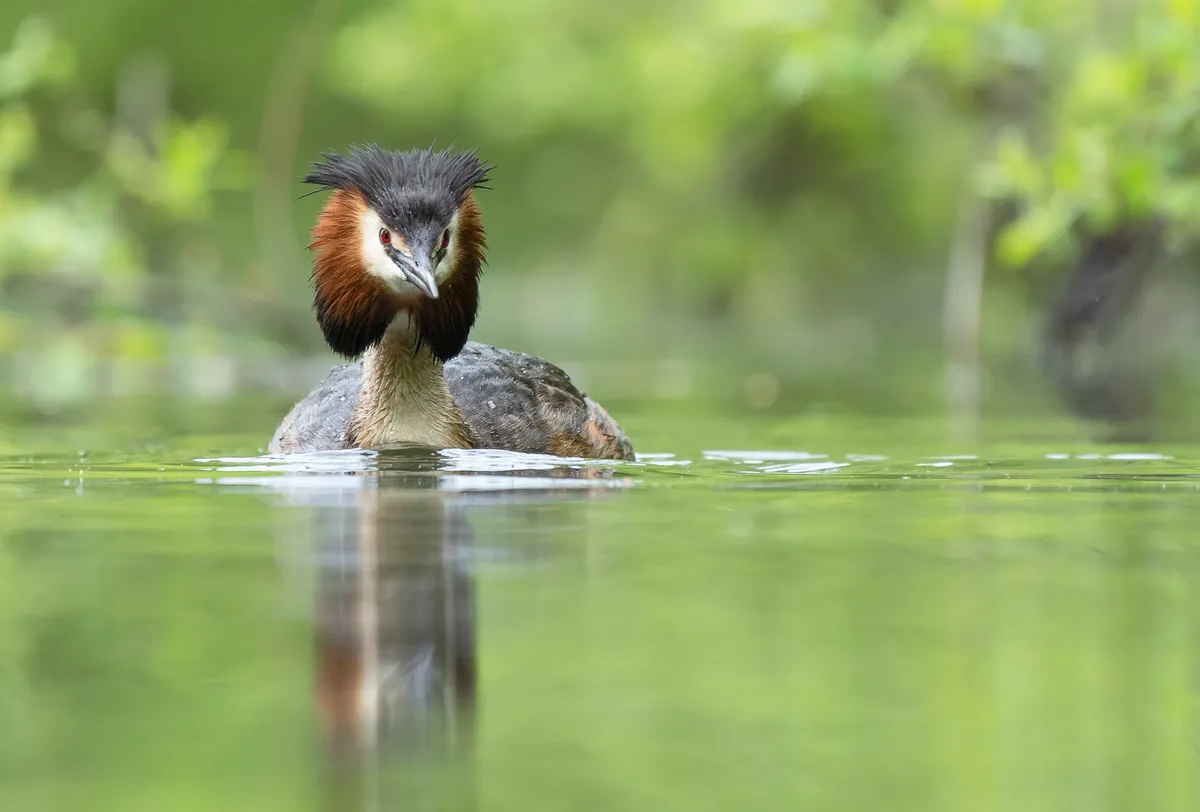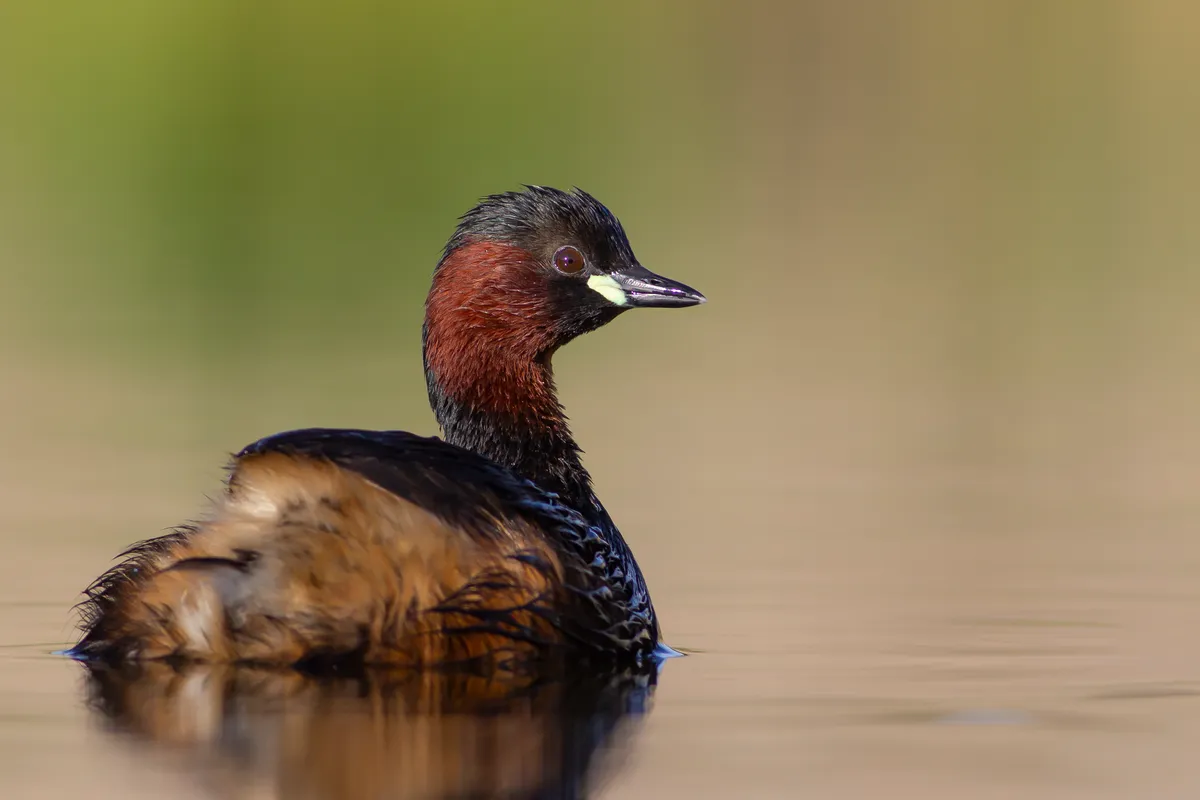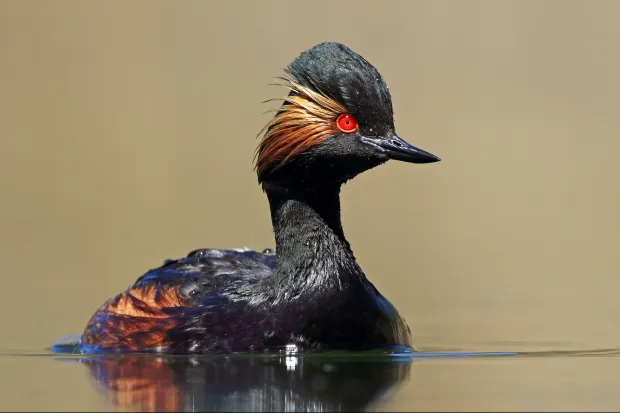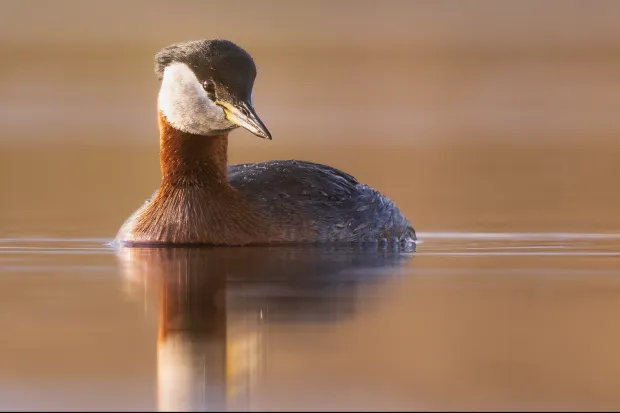Grebes are consummate waterbirds that really don’t like the land at all. They lack any recognisable tail, and their feet are set so far back on the body that they cannot walk properly.
They build platform nests out of weed that often float. All grebes dive underwater for their food, propelled by their unique feet in which each foot is lobed, but there are no webs between them.
Grebes may look like ducks, but their bills are not flattened, instead quite stout and dagger-shaped. Several grebes have remarkable displays, often involving rearing up out of the water with their feet paddling rapidly.
In this guide we take a look at five species of grebe that may be seen in the UK. Looking for more information about Britain's birds? Read our guides to swans, ducks and rails.

- Guide to Britain’s geese species: how to identify and where to see
- Guide to wading birds: how to identify and where to see
- Guide to Britain’s herons, bitterns and cranes: identification, what they eat and where to see
Types of grebe
Great crested grebe (Podiceps cristatus)

The great crested grebe is elegant and colourful, and performs an incredible courtship display in February. It is easy to see, because it seeks out a range of habitats, including rivers, canals, lakes and reservoirs. The largest UK grebe, with a long neck and pink bill.
It has very clear differences in summer and winter plumage. In summer is has red-brown cheeks, dark double-crest and warm brown upperparts. In winter it becomes much whiter, with just a thin black crown against a very white head and neck. Common, with 4,300 pairs in the UK, and 16,500 in winter.
Little grebe (Tachybaptus ruficollis)

Only a little larger than a duckling, the little grebe lives up to its name. It is a shy bird, with a white, fluffy tuft of feathers at the rear, that spends much of its time diving, gathering its food underwater.
You often see it on ponds, lake edges, marshes, slow-moving rivers and canals. It has an extraordinary call, whinny a little like a pony. Common, with 5,000 breeding pairs in the UK, and 150,000 in winter.
Slavonian grebe (Podiceps auritus)

The only place you can see the Slavonian grebe in the UK is in Scotland, as it only breeds in a small number of lochs in the Highlands.
In the warmer months its glorious chestnut-brown plumage is offset by remarkable yellow-orange tufts sticking above the head. In winter it is rather black and white. Uncommon, with 30 breeding pairs in the UK, and a maximum of 920 individuals in winter.
Black-necked grebe (Podiceps nigricollis)

The black-necked grebe is rare and hard to find in Britain (despite being the most abundant grebe in the world), with just 55 breeding pairs, and is often difficult to see on richly vegetated lakes. It lives up to its name, in that it is our only grebe with a black neck in breeding plumage.
It has a rounded head and yellow-orange head ornamentations. In winter the plumage turns black and white. Uncommon, with 55 breeding pairs in the UK, and a maximum of 115 individuals winter.
Red-necked grebe (Podiceps grisegena)

The red-necked grebe is rare in the UK, just a maximum of just 60 individuals in winter. You only ever see the bird alone; if you spot one, look for the yellow-based bill as the key identifier.
In breeding plumage, the neck is reddish-brown, and the cheeks white. In winter, it has a much duskier neck than a great crested or Slavonian grebe. Rare, with a maximum 60 individuals winter.
